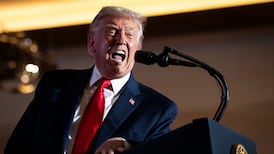Real turning points in human history are rare indeed, but it can already be said with some confidence that the Paris Agreement, adopted by acclamation at the final plenary session of COP21 on Saturday night in Le Bourget, is surely one of them.
Never before have all 195 countries in the world – large and small, rich and poor – pledged that they would fight global warming together, for the sake of future generations “in a world we will not see”, as French president François Hollande eloquently put it.
After 20 years of UN climate conferences, two weeks of hard negotiations in Paris – led with great finesse and determination by French foreign minister Laurent Fabius, as COP21 president – and many sleepless nights, a deal that everyone involved could live with was finally struck.
Its most important element is the highly ambitious long-term goal to hold the rise in average global temperatures to “well below 2 [degrees] above pre-industrial levels” and even to “pursue efforts to limit the temperature increase to 1.5 degrees.”
Of course, the Earth will not be “saved” from the ravages of runaway climate change by the adoption of this overarching goal alone, without the means to achieve it. Disappointingly, no specific targets have been set to reduce greenhouse gas emissions by quantified amounts between now and 2050; instead, parties aim to reach global peaking of emissions “as soon as possible” and to achieve what would amount to carbon neutrality “in the second half of this century”.
But the temperature target – a considerable victory for vulnerable small island states and other low-lying countries threatened by rising sea levels – carries its own clout; it will become the benchmark by which the voluntary pledges made by countries to cut their emissions will be judged over time. So far, 189 of these “nationally determined contributions” have been submitted to the UN Framework Convention on Climate Change secretariat, and they will now have to be updated every five years under the Paris Agreement.
Furthermore, $100 billion per year in aid by 2020 to help poorer nations cope with the challenges – first promised by developed countries at the abortive Copenhagen climate summit in 2009 – has now been set as the “floor level” for this flow of funding, to be reviewed in 2025.
Also significant is the survival in the Paris Agreement of a “loss and damage mechanism” to help deal with displacement of people in the least developed countries as a result of severe storms and other extreme weather events.
Overall, the Paris Agreement sends out a clear signal to the wider world, including capital markets, that we are now witnessing the beginning of the end of the fossil fuel era and the transition to a cleaner energy future, already under way.









